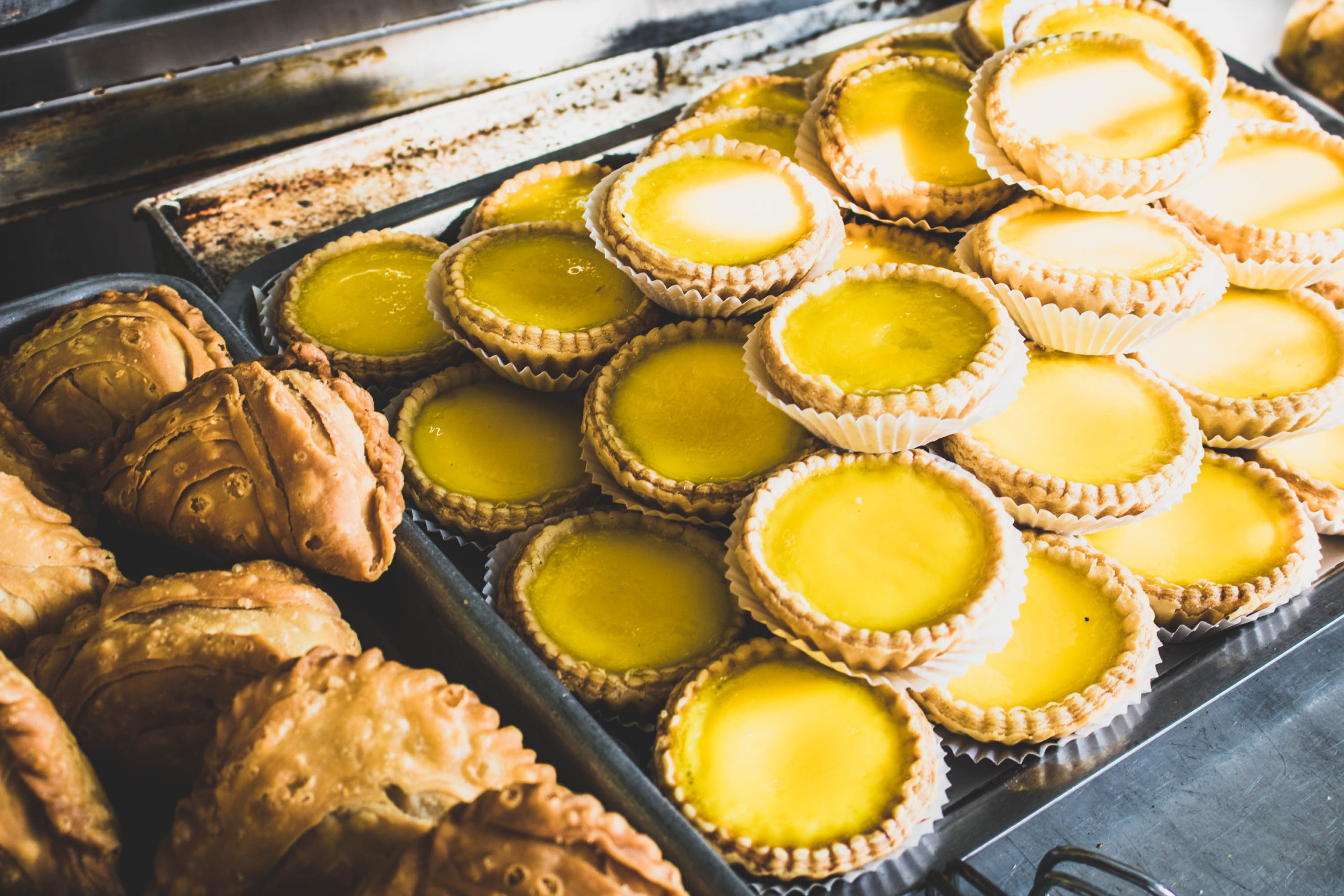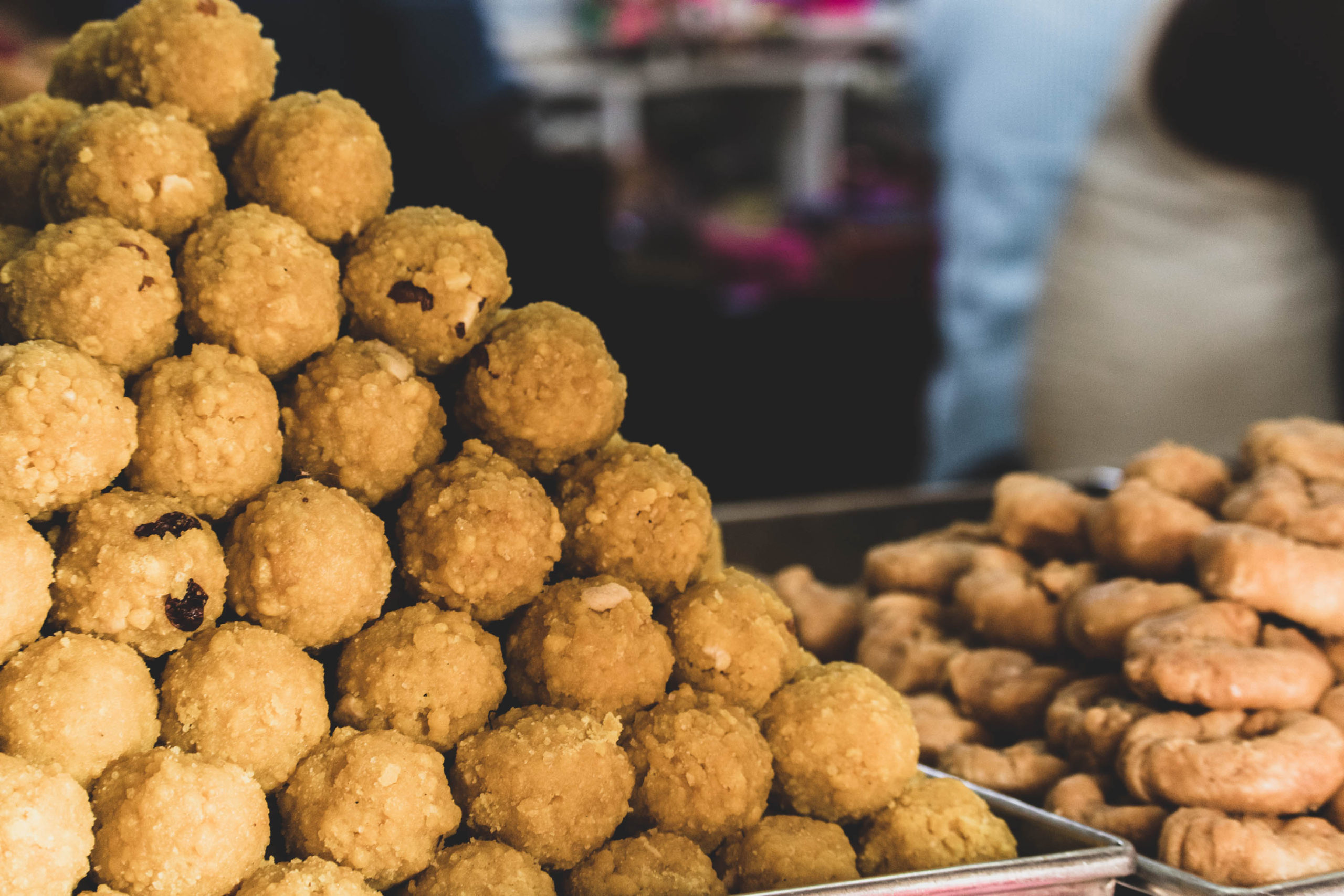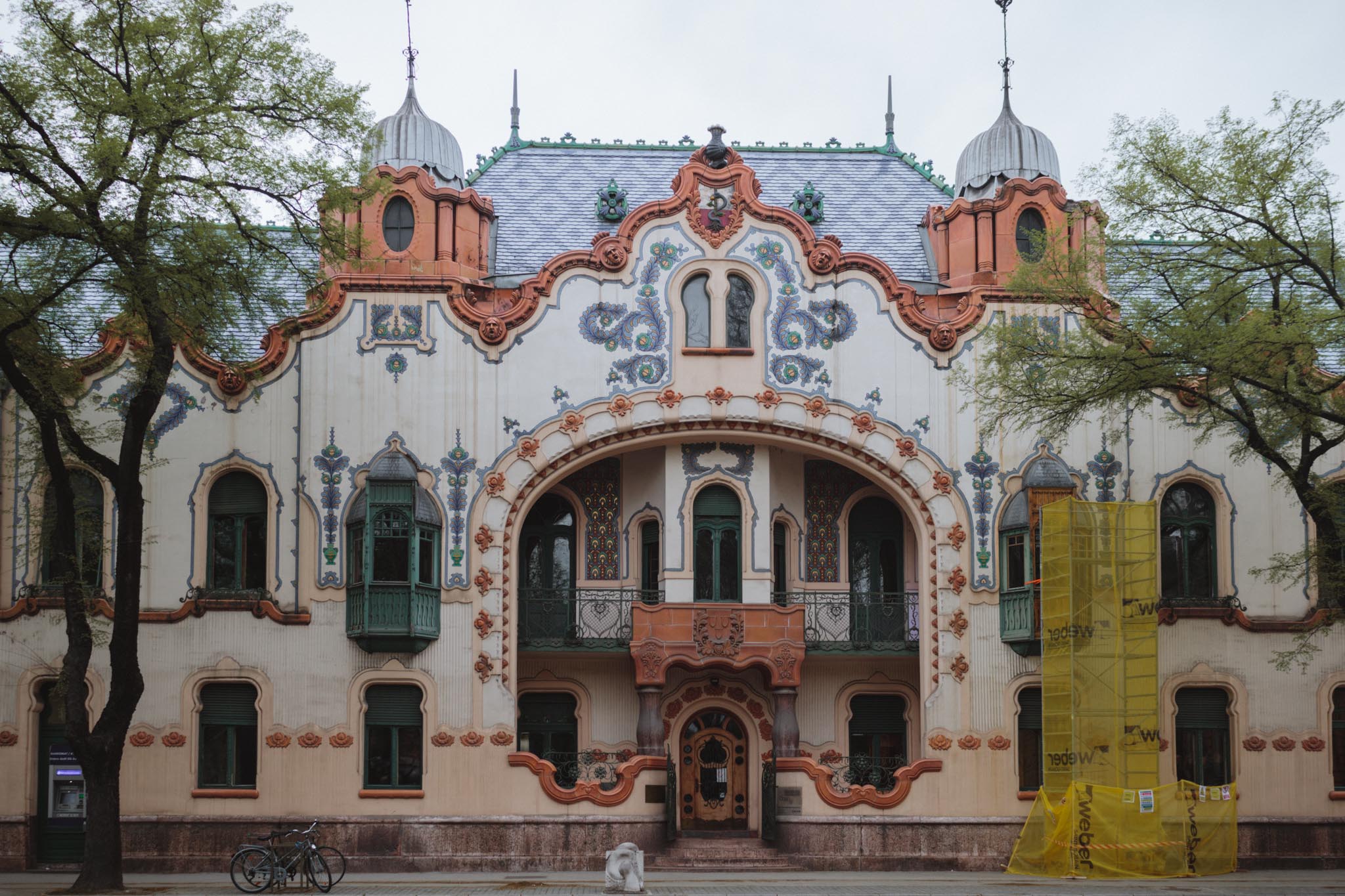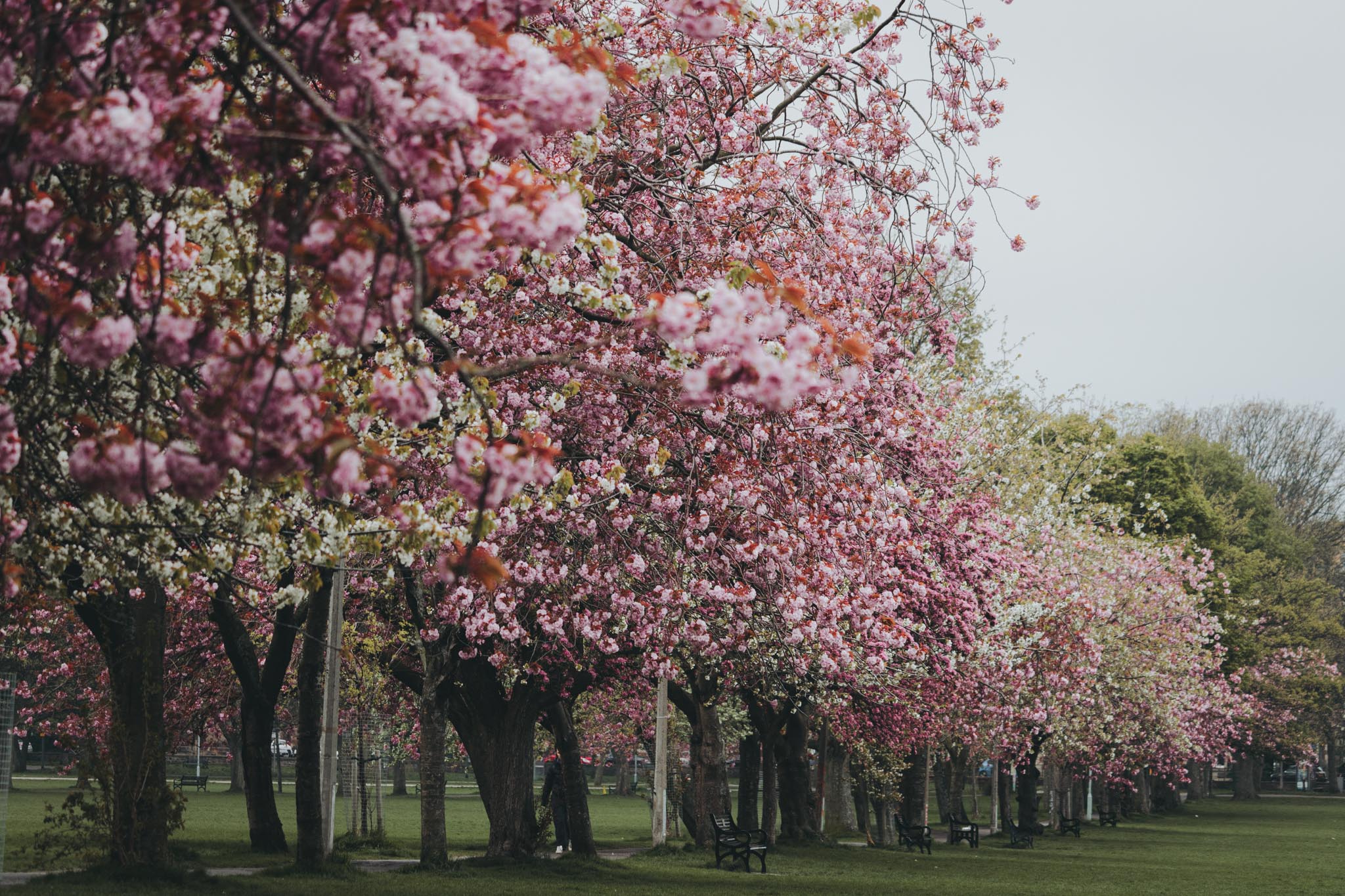Seating on a stool, slurping on piping hot noodle soup in the muggy southeast Asian heat may not sound like a delicious idea but that’s what we did, every single day, on our trip to Malaysia and we would do it again. Read our best things to eat in Malaysia to find out about all the mouth-watering laksas and koay chiaps we had on our trip along the west coast of peninsular Malaysia.
MALAYSIA
Malaysia is a country of many ethnicities and Malaysian food is a tribute to this cultural intermixing. Indian and Chinese immigrants who settled in Malaysia during the pre-colonial and colonial periods have significantly contributed to the country’s food map. In Malaysia, you can eat at hawker stalls selling Chinese classics like Hokkien Mee and Char Kuey Teow, Malay favourites like Nasi Lemak and Mee Goreng, and Indian-style banana leaf meals. When these immigrant communities married into the local populace, new communities like the Jawi Peranakan and Baba Nyonya were born. Their unique cuisine put dishes like the Balmieh, a rich lamb curry with Middle-eastern flavours, and the Nasi Kerabu, a rice dish coloured blue with butterfly pea flowers, firmly on the gastronomic atlas of Penang. The colonial influence, too, features in the food of the land. Toasted bread with kaya and fried pastries like curry puffs are some leftovers of the colonial period. In the Cameron Highlands, English-style high teas complete with scones with strawberry jam and cucumber sandwiches are popular.
Southeast Asia has some of the best food in the world and Malaysia is no exception. Our Malaysia trip was full of food! We tried everything that was on offer: from must-try dishes in Malaysia to little-known delicacies, from Malay and Chinese staples to Indian and Middle-eastern food. Most of our favourite memories of our 2 weeks in Malaysia trip are of eating at hawker stalls and lazing in kopitiams. And don’t worry if you are vegetarian. When we visited Malaysia, I was mostly eating vegetarian food and though it was sometimes hard to find, it was always available.
Best Things to Eat in Malaysia

Best Breakfasts in Malaysia: Eating at Kopitiams
Old-school kopitiams are an integral part of Malaysia’s food culture. Mostly breakfast joints, they open early in the morning between 6 – 7 am and down shutters late in the afternoon around 3 pm. Tea isn’t usually a Malaysian thing unless it is milky Teh Tarik or a cup of cham, a duet of coffee and tea. In Malaysia, the locals want their coffee first thing in the morning. Be it kopi, kopi-C, or the black kopi-O, Malays love their coffee so much that one of Ernest Zacharevic’s Ipoh murals is called the Kopi-O and features the plastic bags with straws that Malays use to carry their coffee around. For breakfast on our 3 days in Ipoh trip, we ordered white coffee! After all, it was invented here! Creamy and sweet, white coffee is made with beans that are processed in margarine. Kaya toast is another local breakfast dish in Malaysia: two crisp slices of toast are slathered with butter and kaya, a coconut jam, sandwiched together and served with Dan Zhi or runny, half-boiled eggs and, of course, coffee. Kopitiams are also where we got our daily fix of egg tarts, chicken floss puffs, curry puff, kaya puff, and salted egg floss. At Kedai Makanan Nam Heong in Ipoh, you can watch the chefs pour the creamy, viscous egg custard into tart shells and slide the tray into the oven. The kitchen fills with the maddening scent of butter and when the chefs get the trays out, the tarts are all buttercup yellow and tantalizingly firm. One bite into the buttery crust, the perfectly set custard and you go oooooo…it’s a mouthful of pleasure!



Kopitiams are a lot like Kolkata’s old cabins and cafes. Just as you would at National Economic or Basanta Cabin in Kolkata, you share tables at a Kedai Kopi and be open to being swept away by the tide of conversations. Words flow freely in these coffee shops where servers run between aisles, bowls of steaming soups and noodles perched precariously on trays. Most servers don’t speak English unless you are at a kopitiam that’s frequented by tourists, and you have to communicate your order and get your bill. It’s amazing how much talking you can actually do without having a language in common. At an eatery where we were digging into a plate of black pepper noodles, a server was trying to communicate the outstanding bill to a couple who clearly spoke no English. The bill was RM 20 and she just couldn’t remember the word “twenty”. She stood gesturing with her hands while the guests tried their best to understand how much to pay till a young Malay quipped “twenty.” She did a little jump and went, “yasss! Twenty!” At Hong Kong Bar in George Town, we spent close to half-an-hour speaking to Jenny in halting English. When we told her that we love the local food, she was pleasantly surprised. “Most Indian tourists turn their noses at our food,” she said.
Things to Eat in Malaysia: Breakfast at Kopitiams
- Kopi: If you like yours black, order a kopi-O; otherwise go for kopi: coffee with condensed milk. We always ordered iced coffee in Malaysia! In Ipoh, order the famous Ipoh white coffee.
- Egg Tarts: The Malay cousin of the Portuguese Pastel de Nata. These bright yellow delights have a buttery crust filled with creamy, eggy custard. You can never have just one!
- Kaya Toast: Two slices of toasted white bread with butter and kaya, coconut jam, in-between. We loved kaya so much we bought a bottle home!
- Dan Zhi: Half-boiled eggs on toast. Perfect start to your morning!
- Noodle Soups: For a hearty breakfast, order a curry mee or a kuey teow soup with meatballs, fried tofu skins, tofu curds, greens, and handmade noodles.



Best Dishes to Eat in Malaysia: Street Food
The best places to eat in Malaysia are hawker stalls. Period. Southeast Asia is heaven for foodies: Good food at reasonable prices. The Jalan Alor night market is the touristy street food drag near Bukit Bintang. Post sunset, the street transforms into a sea of red chairs and tables, stalls with bright yellow banners, and eager servers brandishing menus at passers-by. You can watch chicken wings being grilled, an extensive selection of seafood and meat ready to be cooked as per your choice at lok lok stalls, fruit stalls with a vibrant display of dragon fruit, mangosteen, and banana, and dim sums being sold from bamboo baskets. The rickety tables are laden with feasts: Greasy noodle dishes like Lo Mein and Mee Goreng, bowls full of spicy noodle soups like Tom Yam and Curry Mee, servings of steamed blood cockles and snails, local classics like Char Kuey Teow and Nasi Goreng, blanched leafy greens, magnificent crabs cooked in black pepper sauce, batter-fried squids, skewers of char-grilled satay, and chilled bottles of Tiger beer. Some of the best things to eat in Malaysia are noodles! Patrons listen to live music while deshelling their crabs and slurping noodles. It’s a crowded, all-night-long open-air party where conversations and beer flow freely.



In Kuala Lumpur, you get to taste a more cosmopolitan spread but street food or hawker stall food changes with the city. On our 3 days visit to Ipoh, we found that the food is more Chinese than Malay. Beansprout chicken, braised baby octopus, and chicken feet in soy sauce are the best things to eat at the night market on Jalan Dato Tawhil Azar. At Tong Sui Kai, you can order the Ipoh-style Laksa, Hokkien Mee, Wantan Hor, and a variety of other Malay-Chinese dishes. In George Town, where we spent 3 days feasting on street food, you can taste the Wantan Mee on Chulia Street or the Duck Koay Chiap on Kimberley Street. In Langkawi, at the Temonyong Night Market, the food has a distinctively rural flavour: Stacks of satay featuring different cuts of chicken and beef, banana-lead wrapped otak-otak, fried anchovy fritters, soya sauce drenched noodles, and apom baliks fill the stalls. Unlike the predominantly Chinese-run hawker stalls of George Town or Ipoh, many of these stalls were run by beautiful hijab-wearing Malay women.
Things to Eat in Malaysia: Malay Street Food
- Lok lok: Pick a skewer of meat, seafood, or vegetables. Dip it in any of the marinades that the hawker stall cart offers. Then cook it in boiling broth. Delicious!
- Lor bak: Five-spiced flavoured vegetables, meat, and seafood wrapped up in bean curd skin and fried.
- Satay: Satay is a must-try food in Malaysia. Grilled meat on skewers. Order with a side of chilled beer!
- Otak-otak: Try this spicy fish custard that is wrapped in neat banana leaf parcels and barbecued over charcoal at night markets.
- Steamed la la: Order a plate of escargots and a buttery dipping sauce to share.



Middle Eastern Food in Malaysia
Thanks to Malaysia’s significant Arab population, you can dig into some excellent Middle Eastern food on the street. In Kuala Lumpur, we had some of the best shawarmas ever at Halab Gate near the Bukit Bintang MRT. The meat had the most perfect char! The pavement opposite Lot 10 is lined with Middle Eastern eateries. George Town, too, has several Middle Eastern restaurants. For vegetarians, there’s a roadside stall on Chulia Street that sells delicious falafel. Our favourite Middle Eastern eatery near Cenang Beach in Langkawi was the Damascus Cafe. It’s a cute roadside cafe near the Cenang Mall and serves excellent shawarmas and falafel wraps.
Must-Eat Food in Malaysia: Chinese Classics
Char Kuey Teow is arguably Malaysia’s most well-known Chinese dish. It is believed to have originated in Chaozhou in China’s Guangdong province and today, tourists flock to establishments like Tiger Char Kuey Teow in George Town for a taste of it. Another Chinese dish that has become a Malaysian staple, especially in the Cameron Highlands, is the steamboat. An array of skewered meat, seafood, and veggies are provided along with a cauldron full of bubbling soup and you have to cook them by dipping them in the soup. At the Mayflower, you can take your pick between the Chinese herbal soup and the Tom Yam Soup. The Bak Kut Teh, a herbal bone broth with Fujian origins, is one of Kuala Lumpur’s most popular dishes. The endless list of Chinese dishes that have become an integral part of Malaysia’s culinary fabric includes Chee Cheung Fun, Koay Teow th’ng, Lor Bak, Popiah, Pan Mee, Wanton Mee, Oyster Omelette, and Char Siu. If you are visiting Malaysia, make sure you try these dishes.


Dim sum, the dish that the whole world is obsessed with, originated in China some 2500 years ago. Chinese immigrants brought them to Malaysia when they began to immigrate there in the 15th century and today, restaurants like Ipoh’s Restoran Foh San and Kuala Lumpur’s Dolly Dim Sum are always overflowing with patrons. Servers roll trolleys stacked with bamboo baskets filled with pepper chicken sui mai, duck dumplings, egg custard buns, char sui bao, and various other types. Dim sum is so popular with locals that the famous Din Tai Fung has opened an eatery in Kuala Lumpur’s Pavilion Mall and it goes without saying that their Xiao Long Bao is a revelation!
Things to Eat in Malaysia: Chinese Dishes
- Char Kuey Teow: Flat rice noodle strips fried with juicy prawns, chicken, and greens.
- Bak Kut Teh: Herbal bone broth, popular for breakfast in kopitiams in Kuala Lumpur.
- Steamboat: Order your broth of choice and an assortment of meat, seafood, and vegetables, then cook them tableside in the boiling broth. Perfect for a cosy dinner in the highlands!
- Noodle dishes: Hokkien Mee, Wantan Mee, Pan Mee, Wantan Hor…the list is endless. Just order anything from the menu because everything is delicious. If you like it soupy, order the koay teow th’ng or the koay chiap with duck meat.
- Popiah: Fried spring rolls ready to be dipped in sambal and devoured.
- Hainanese Chicken Rice: Rice with poached chicken served with chilli sauce.
- Laksa: Laksa is a must-eat dish in Penang. Try both types: curry laksa which has a coconut base and asam laksa which has a tamarind base. Both are equally fragrant and equally unforgettable.
- Chee Cheong Fun: Rice noodle rolls stuffed with shrimp, beef, vegetables, or chicken and drizzled with soy sauce.
- Dim sum: Of course! Pick any.
Malaysian Desserts
Malaysian desserts are unique; coconut milk, tofu curd, sticky rice Thai-style, fruits, creamed corn, pandan-flavoured jellies and noodles, and red beans are popular ingredients. In Malaysia, you must try kuihs. Nyonya-style kuihs, steamed sweets made with glutinous rice and sometimes stuffed are popular in George Town. Behind the glass case at Moh Teng Pheow Nyonya Koay and Canteen are an array of red and green kuihs, some wrapped in pandan leaves, others stamped with traditional motifs. Apom Balik, a type of crispy pancake filled with sweet, creamed corn is a hawker stall favourite. Cendol is popular across the country while Tau Fuh Fah seemed a favourite only in Ipoh. Tong Sui Kai in Ipoh is also known as the dessert street; massive bowls of ice cream and fruit-laden Ais Kacangs are almost on every table.



Fresh tropical fruits are essential to Malay desserts. Fruit stalls in Malaysia are always overflowing with mangos, dragon fruits, rambutans, mangosteens, bananas, and coconuts. If you are travelling in the durian season, you will see the fruit stacked neatly at almost every shop. After being shunned for years, the durian is seeing a revival with chocolatiers and bakers incorporating the fruit in various preparations. Because of its climate, a number of temperate fruits grow in the Cameron Highlands. Strawberry farms are a major tourist attraction here; at the Big Red Strawberry Farm, you can pick and eat juicy strawberries as well as try a variety of strawberry-themed desserts.
Things to Eat in Malaysia: Best Malaysian Desserts
- Kuih: Steamed sticky rice desserts flavoured with pandan, coconut, and other natural flavourings. They come in various shapes and colours and are often stamped with traditional motifs.
- Cendol: Pandan-flavoured jelly noodles, shaved ice, and palm sugar in refreshing coconut milk!
- Apom Balik: Sweet pancakes filled with creamed corn. They are popular at night markets.
- Ais Kacang: A towering dessert of an assortment of fruit and ice cream. Takes two to finish!



Best Malay Food To Try in Malaysia
The Malays were sea-faring people and seafood played a major role in Malaysian cuisine. At any market in Malaysia, be it Chowkit in Kuala Lumpur or Pasar Chowrasta in George Town, you’ll see vats full of glistening fish, rows of crabs and lobsters, blood cockles, mussels, octopi, and squids on display. Blood cockle noodle soup is a popular lunch option at Lai Foong Restaurant in Kuala Lumpur. At Lor Bak and Lok Lok stalls, you can select your seafood of choice and the stall owner will prepare it. Dried seafood, like starfish and anchovy, are common ingredients. Sambal Belachan, a fiery dip of chillies and toasted shrimp paste, is served with almost every dish. Other popular sambals include the sambal jeruk, sambal tempoyak which has fermented durian, and sambal kicap. Another popular seafood dish is the Ikan Bakar, or fish marinated and grilled in a bamboo leaf wrapper. To try, head to Kampung Bharu in Kuala Lumpur where eateries like Kak Som and Gerai Pak Lang Ikan Bakar offer an excellent selection of fresh seafood.



Anchovies also feature in Nasi Lemak, considered Malaysia’s national dish. It is a fragrant rice dish cooked in coconut milk and pandan leaf served with sambal, anchovies, and cucumber. It is often served with Sambal Sotong or Chili Squid. For Malays, rice is the most important part of the meal. Apart from Nasi Lemak and Nasi Goreng, there is Nasi Bandung and Nasi Kerabu and other regional offerings.
Things to Eat in Malaysia: Authentic Malaysian Dishes
- Nasi Lemak: If you could just have one dish in Malaysia, have the Nasi Lemak. Open a parcel of Nasi Lemak and the fragrance of the coconut rice will make your mouth water. Eat it with cucumbers, peanuts, anchovies, and red hot sambal. Some eateries will serve it with sambal sotong and/or a boiled egg.
- Nasi Kerabu: Rice that is coloured aquamarine with butterfly-pea flowers. Served with bean sprouts, coconut, and fish sauce.
- Ikan Bakar: Whole fish slathered in a marinade, then wrapped in a banana leaf and grilled. Drizzle with some lime juice, get some sambal on the side, and bon appetit!
- Nasi Goreng and Mee Goreng: Fried rice (nasi) and fried noodles (mee), usually cooked with meat and vegetables.
- Rojak: A sweet and sour salad of fried dough and fruits slathered with spicy shrimp paste.
- Asam pedas: Freshwater fish, stingrays, or fat, juicy prawns cooked with tamarind and herbs. A must-eat in Penang!

Nasi Lemak in banana leaf packets


Must-Try Food in Malaysia: Eating in Little India
No list of best things to eat in Malaysia can be complete without a mention of Nasi Kandar which has, despite its Tamil roots, become a Malaysian institution. Muslim immigrants would sell rice (nasi) and curries to labourers from pots which they hung on a bamboo pole carried on their shoulder (kandar). Initially, nasi kandar was primarily meant for breakfast and the options were limited to fish curry with okra, fried fish, curried beef, and boiled eggs but the selection has increased manifold today to include the beef spleen, fish roe, squid, crab claws, prawns, and chicken. Vegetarian options are usually fewer; one may get curried okra and eggplant, stir-fried cabbage, and blanched leafy greens. At Orchid Corner in Tanah Rata, we had some mouth-watering Nasi Ayam, or roasted chicken, and Nasi Kukur, or fried chicken, and also a deliciously light yet creamy curry of fish roe. At Nasi Kandar eateries, each curry is priced individually and the selection changes by the day, thus you can taste the freshest seasonal produce. Roti Canai is another fixture at Mamak stalls and one of our favourite Malaysian dishes. Depending on your order, this flatbread is served drenched in dahl or with a fried egg. Another favourite is the Roti John, a sloppy sandwich of buns wrapped in a spicy, cheesy omelette, smeared with cheese sauce and sweet tomato sauce and stuffed with shredded meat or tuna.




Indian eateries all over Malaysia serve banana-leaf curries. At these eateries, you are served a selection of vegetable stews and curries, dahl, rice, pappadam, pickle, rasam, and a dessert. For non-vegetarians, there is usually a chicken or lamb curry. Thosais, the Malaysian version of the South-Indian dosa are popular. The crepe tastes fairly similar to what you get in India; the stuffing, the sambar, and the chutneys are different. In roadside stalls in Little India, you can find pakoras and Indian sweets.
Things to Eat in Malaysia: Indian Food
- Banana leaf meals: Rice, dal, fried vegetables, and spicy Indian curries. Value for money and always satisfying!
- Roti Canai: Think Indian roti, but thinner and larger, almost like a delicate tissue. Served with gravy.
- Nasi Campur: A buffet of curries, seafood, meat, eggs, vegetables, and even fish roe, where each curry is individually priced. Pick what you want, pay for it, and get rice and gravy complimentary. Popular at Indian Mamak stalls.



Vegetarian/Vegan Food in Malaysia
IS VEGETARIAN / VEGAN FOOD AVAILABLE IN MALAYSIA? Yes, it is! In fact, we tried vegetarian food in all the cities we visited.
Malaysia can be a vegetarian-friendly destination depending on which parts of the country you are visiting. Vegetarian/vegan food is fairly easy to come by in cities like Kuala Lumpur and George Town. Most vegetarian food guides to these cities will refer you to Indian restaurants where you can dig into a thosai or order a banana-leaf meal with vegetarian curries. Or, to Chinese Buddhist restaurants where you can enjoy vegetarian versions of classics like the Penang Laksa. Hipster cafes and fine-dining restaurants almost always have vegetarian/vegan fare, but if want to survive solely on hawker-stall food on your trip, it might be a difficult task to pull off.
To order vegetarian food at hawker stalls, first, ask if they have a cooking oil that is not animal lard. A lot of eateries say they can rustle up a no-meat no-seafood version but cook with lard. Most soups are made with pre-made broth and the broth, almost always, has animal bones but some stalls will make you a dry version. So instead of ordering a Pan Mee soup, request a dry Pan Mee. Most places will happily get you a vegetarian Char Kuey Teow, Mee Goreng, Nasi Goreng, or Lo Mein. Another option is to stop by a Lok Lok stall.




In Kuala Lumpur, we dined at Blue Boy Vegetarian and we highly recommend it. The Nasi Lemak, Mee Soup, and Char Kuey Teow are our top picks. Besides that, Little India has numerous eateries where you can eat vegetarian curries. The Dharma Realm Guan Yin Sagely monastery canteen has an extensive vegetarian buffet. In George Town, there’s Brick Café, Yun Shui Ge Vegetarian House, Luk Yea Yan, Evergreen Vegetarian, and Lilly’s Vegetarian Kitchen. We had the toughest time finding vegetarian food in Ipoh. In Ipoh, my option seemed to be limited to Sri Anand Bhavan unless I was eating at pricey places like Plan B or the Dong Café.
The entrees might not always be vegetarian/vegan-friendly but the desserts almost always are! Be it the sticky kuihs, crispy apom baliks, jiggly tau fuh fah, or coconut milk cendol, you will be spoilt for options! Plus, Malaysians love their Ais Kepals, or flavoured ice balls, and on hot Malaysian afternoons, licking one feels like nirvana.

Street food is an integral part of Malaysia’s food culture and eating out at hawker stalls is part and parcel of daily life here. There are numerous stalls selling the same dish and there’s no point in stressing about finding the “best” stall. Every single place will treat you to an overload of deliciousness! Just seat down at a table, and order whatever catches your fancy. Add a glass of iced kopi or a chilled beer, and enjoy.
What are your favourite things to eat in Malaysia?














Leave a Reply